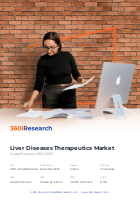
Liver Diseases Therapeutics Market by Disease Type (Alcoholic Liver Disease, Hepatitis B, Hepatitis C), Therapy Type (Biologic Immunotherapies, Cell-Based & Regenerative Therapy, Gene Therapy), Route Of Administration, Drug Class, End User, Distribution Channel - Global Forecast 2025-2030
SKU
MRR-437A5D08AE2A
Region
Global
Publication Date
December 2025
Delivery
Immediate
2024
USD 18.76 billion
2025
USD 20.26 billion
2030
USD 30.00 billion
CAGR
8.13%

Download a Free PDF
Get a sneak peek into the valuable insights and in-depth analysis featured in our comprehensive liver diseases therapeutics market report. Download now to stay ahead in the industry! Need more tailored information? Ketan is here to help you find exactly what you need.



